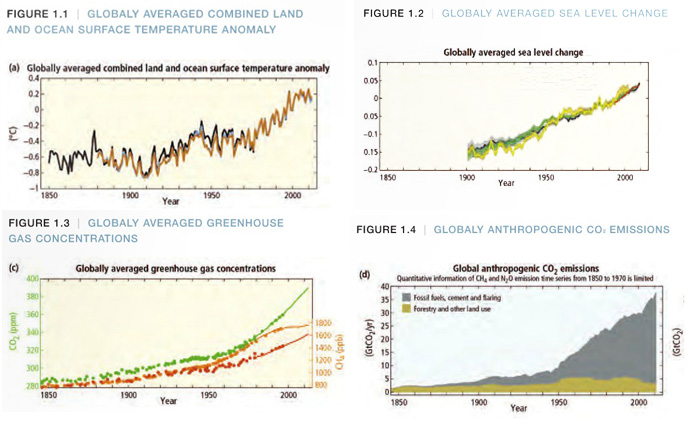GREENPEACE
Introduction
The good news first: the Energy [R]evolution is already happening! Since the first edition was published in 2005, costs for wind power and solar photovoltaics (Pv) have dropped dramatically and markets have grown substantially. Between 2005 and the end of 2014 over 496,000 MW of new solar and wind power plants have been installed – equal to the total capacity of all coal and gas power plants in Europe! In addition 286,000 MW of hydro-, biomass- , concentrated solar- and geothermal power plants have been installed, totaling 783,000 MW of new renewable power generation connected to the grid in the past decade – enough to supply the current electricity demand of India and Africa combined.
Renewable power generation has become mainstream in recent years. Onshore wind is already the most economic power source for new capacity in a large and growing number of markets, while solar Pv is likely to follow within the next 3 to 5 years. utilities in Europe, North America and around the globe are feeling the pressure from renewables, and the old business models are starting to erode. . In Germany, where the capacity of solar Pv and wind power is equal to peak demand, utilities like RWE and E.on struggle. More and more customers generate their own power. The future business model for utilities will have to change from selling kilowatt hours to selling energy services if they are to survive.
However, with all the good news from the renewable power sector, the overall transition away from fossil and nuclear fuels to renewables is far too slow to combat dangerous climate change. During the past decade almost as much capacity of new coal power plants has been installed as renewables: 750,000 MW. Over 80% of the new capacity has been added in China, where not only wind and solar power lead their respective global markets, but also new coal.
but there are the first positive signs that the increase in coal use is coming to an end in China. The amount of coal being burned by China has fallen for the first time this century in 2014, according to an analysis of official statistics. China’s booming coal in the last decade has been the major contributor to the fast-rising carbon emissions that drive climate change, making the first drop a significant moment.
100% Renewables – a Revolutionary Idea Gets More and More Support
Phasing out nuclear and fossil fuels entirely is still a revolutionary idea and many energy experts are skeptical. However, more and more scientists, engineers and activists actively promote a 100% renewable energy vision. According to the IPCC’s latest assessment report, we have already used almost 2/3 of our carbon budget, if we are to have a reasonable chance of limiting global mean temperature rise to 2 degrees C. At the current and projected rate of consumption, this entire budget will be used by 2040. So it is essential that we move rapidly towards a new form of energy supply – one that delivers 100% renewable energy by 2050.
Greenpeace and its renewable industry association partners have been researching and presenting Energy [R]evolution scenarios since 2005, and more recently has started collaborating with the scientific community. While our predictions on the potential and market growth of renewable energy may have seemed fanciful or unrealistic, they have proved to be accurate.1 The 2015 edition of the global Energy [R]evolution features: 1) a 100% renewable energy scenario for the first time; 2) a basic Energy [R]evolution case with a final energy share of 83% renewables which follows the pathway for the E[R] published in 2012; and 3) and the IEA´s World Energy Outlook 2014 Current Policies scenario extrapolated out to 2050- which serves as a reference case.
The Transportation Revolution Has Not Really Started Yet
While the transition towards 100% renewables in the “traditional” power and heating sector seems well within our grasp, the phase-out of fossil fuels in the transport- and parts of the industry sector are still present major challenges, especially air travel and transport. Oil dominates the global transport system and a switch from combustion engines to electric drives is not possible for example for airplanes. The “transport revolution” is not simply a technology change; it requires new mobility concepts and the auto industry need to change just like utilities, from selling a product – such as cars – to selling mobility services. Increased shares of e-mobility will increase the overall power demand significantly, adding more pressure on utilities to provide more electricity while phasing out coal and nuclear power plants. Electric mobility must go hand in hand with renewable energy expansion, as an electric car supplied by coal power plant would emit nearly as much if not more CO2 than an efficient one with a combustion engine.
Download full version (PDF): Energy [R]evolution
About Greenpeace
www.greenpeace.org
Greenpeace is a global environmental organisation, consisting of Greenpeace International (Stichting Greenpeace Council) in Amsterdam, and 26 national and regional offices around the world, providing a presence in over 55 countries. These national/regional offices are independent in carrying out global campaign strategies within the local context they operate within, and in seeking the necessary financial support from donors to fund this work.
Tags: Greenpeace, Renewables







 RSS Feed
RSS Feed